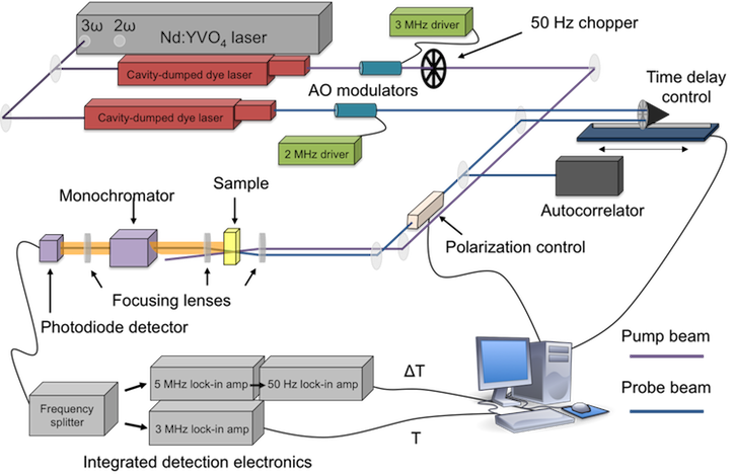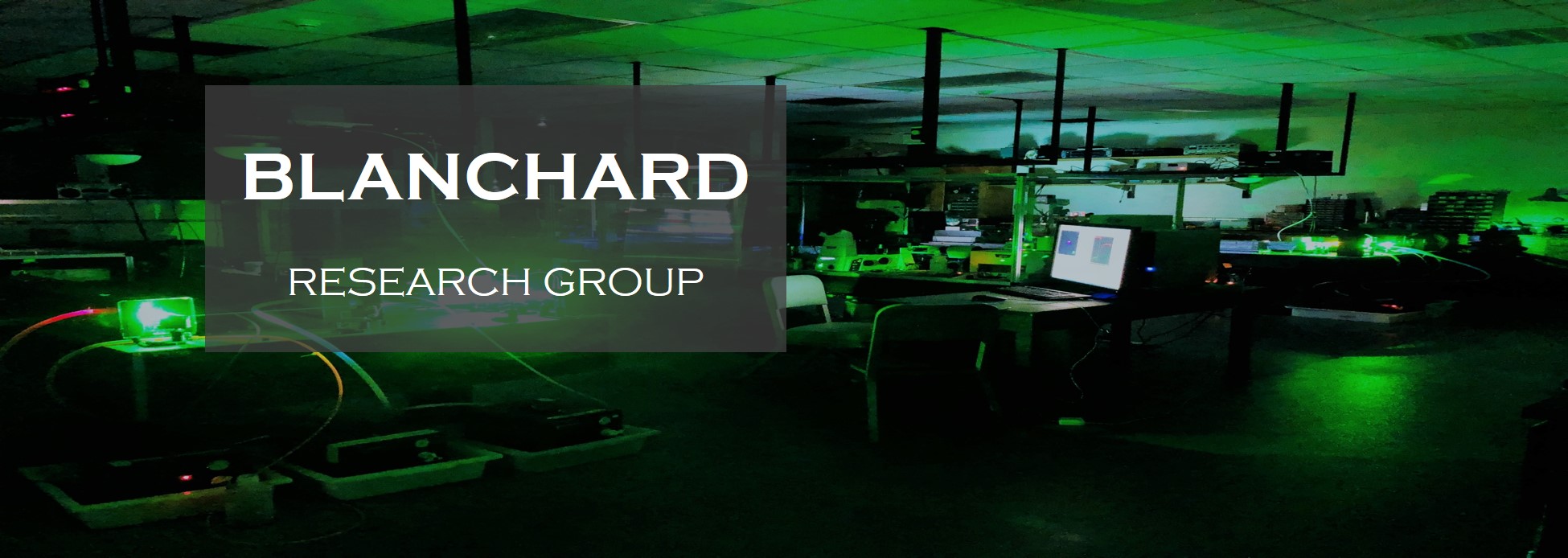TCSPC
PUMP-PROBE
TCSPC-CSM
Observing
the local environment
Observing
energy transfer using
Observing molecular
scale organization
of a
molecular probe
pump-probe spectroscopy
and interactions
[Learn
more]
[Learn
more]
[Learn more]
FRAP
LANGMUIR-BLODGETT TROUGH
Observing translation
diffusion
and
Forming monomolecular films and
monitoring
mobility of probe
molecules and
films
film formation and deposition
[Learn more]
[Learn
more]
|
TIME-RESOLVED
PUMP-PROBE SPECTROSCOPY INSTRUMENT

|
Schematic
of the time-resolved pump-probe stimulated emission
instrument, showing pump beam (purple) and probe beam
(blue).
|
TIME-RESOLVED
ANISOTROPY DECAY AND VIBRATIONAL
POPULATION RELAXATION MEASUREMENTS
We developed a
time-resolved pump-probe spectroscopy instrument for
operating two complementary stimulated emission
measurements: time-resolved anisotropy and vibrational
population relaxation, both with ca. 5 ps time resolution.
A mode-locked Nd:YVO4 laser is used a the source laser of
this system, which produced 13 ps pulses at 80 MHz
repetition rate, with a 2.5 W average power. The third
harmonic light of the source laser is used to excite two
pumped dye laser synchronously to generate picoseconds
laser pulses for the measurements. Both laser beams are
tightly synchronized in time and focused on the sample.
The pump laser pulse (purple) is used to excite the sample
of interest, and the probe laser pulse (blue) is for
interrogating the perturbation to the sample caused by
pump pulse as a function of time and polarization
differences between the pulses.
A hybrid electro-optic and mechanical modulation signal
encoding scheme is introduced to the system to enhance the
S/N ratio.
The detection of the transient signals is accomplished by
a ratio and audio frequency triple-modulation scheme, with
synchronous demodulation detecting electronics. The
resulting signals are sent to computer and analyzed by a
program written in-house.
|
|
|
|

